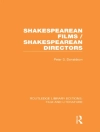Representative Plays by American Dramatists: 1856-1911: Paul Kauvar; or, Anarchy is a poignant exploration of the socio-political landscape of late 19th-century America, encapsulated through the lens of personal and collective struggles against anarchy and authority. This work combines vivid dialogue with a strikingly realistic tone, characteristic of Mac Kaye’s dramatic style, while also engaging with contemporary themes of liberty, individualism, and social upheaval. Set against the backdrop of a rapidly changing society, this play serves to illuminate the complexities of its characters, whose lives are deeply interwoven with the tumultuous forces of their time. Steele Mac Kaye, a prominent playwright, theatrical innovator, and actor, drew upon his experiences in an era defined by its cultural revolutions. His keen insights into the societal tensions of his time, coupled with his commitment to American theater, profoundly influenced the characters and themes portrayed in his works. Mac Kaye’s passion for exploring the human condition amidst societal challenges led him to craft narratives that resonate with audiences striving to understand their own roles in a shifting world. This captivating play is an essential read for anyone interested in the evolution of American drama and the exploration of identity amidst chaos. Mac Kaye’s nuanced storytelling invites readers to ponder the balance between freedom and order, making it relevant for today’s political discourse. Recommended for scholars, students, and theater enthusiasts alike, this work remains a significant contribution to the understanding of American theatrical expression during a pivotal era.
A propos de l’auteur
Steele Mac Kaye (1842–1894) was a multifaceted figure in American theatre history, renowned as an actor, playwright, director, and innovator. Born James Morrison Steele Mac Kaye in Buffalo, New York, he grew to become a seminal influence in shaping the American stage during the late 19th century. His vast experiences in Europe, where he studied under the tutelage of Francois Delsarte, and his interactions with luminaries like Henry Irving and Ellen Terry, enriched his dramatic outlook. Mac Kaye’s artistic pursuits were characterized by a quest for realism on the stage, which he furthered through numerous innovations in theatre technology and acting technique. He was a prolific playwright who penned over thirty plays, channeling his concern for social issues into his dramatic works. Among his significant contributions to American drama, ‘Paul Kauvar; or, Anarchy’, included in ‘Representative Plays by American Dramatists: 1856-1911’, epitomizes his knack for fusing political commentary with theatricality. Underlying his literary contributions, Mac Kaye’s influence extended to the foundation of acting academies and his visionary design for a spectacular theatre, the never-completed ‘Spectatorium’ for the Chicago World’s Fair of 1893. Although he did not live to see all of his ambitious projects come to fruition, Steele Mac Kaye’s legacy endures through his impact on the evolution of American theatre and his works that capture a vivid portrayal of life’s complexities during his time.












